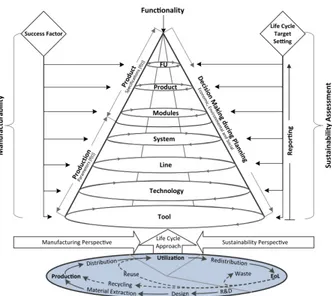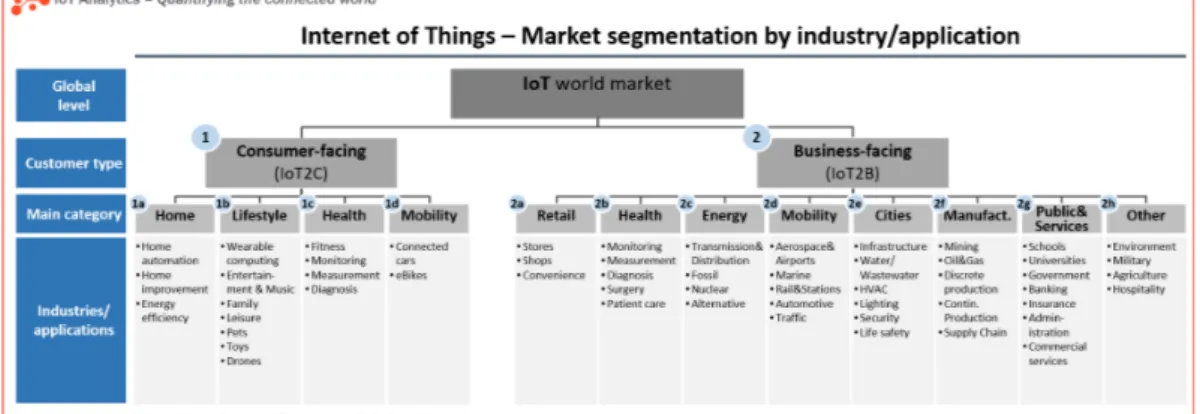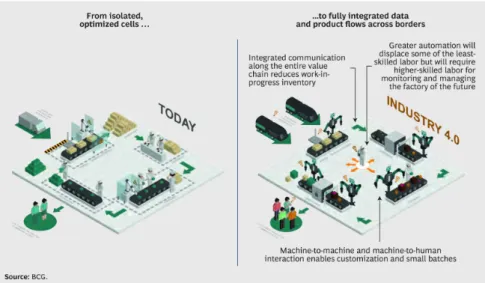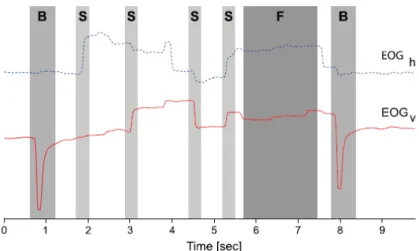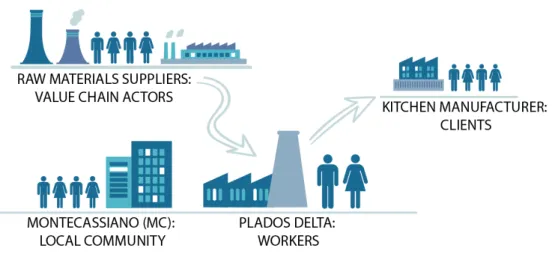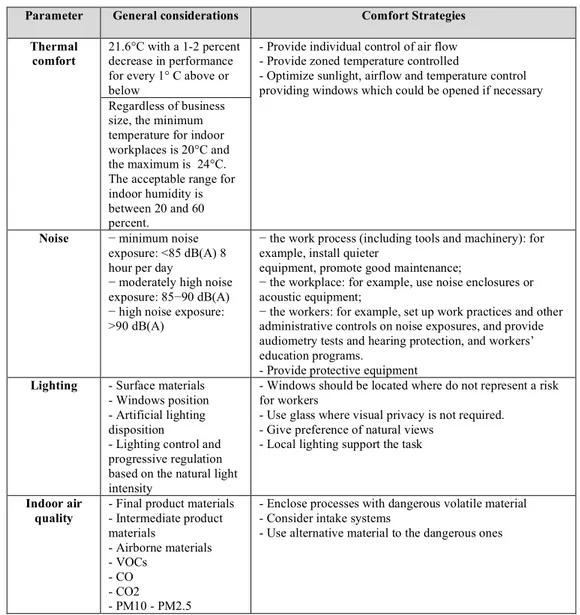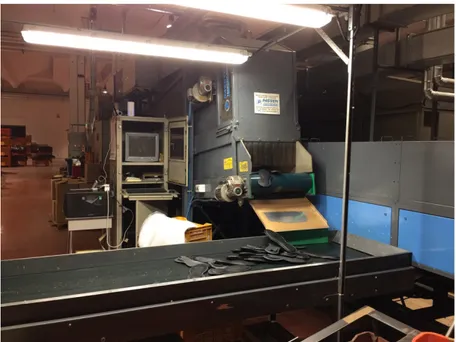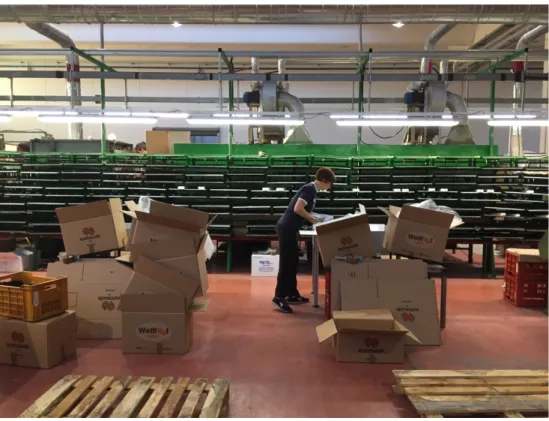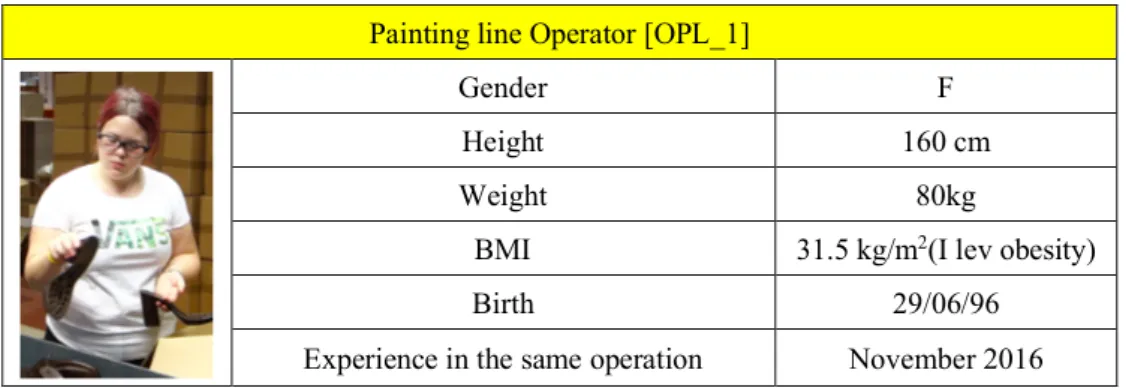Università Politecnica delle Marche
Scuola di Dottorato di Ricerca in Scienze dell’Ingegneria Corso di Dottorato in Ingegneria Industriale
---
Developing sustainable
manufacturing in the era of IoT: a
methodology to achieve social
sustainability in connected factories
Ph.D. Dissertation of:
Fabio Gregori
Supervisor:Prof. Michele Germani
Assistant Supervisor:
Eng. Alessandra Papetti
Ph.D. Course coordinator:
Università Politecnica delle Marche
Scuola di Dottorato di Ricerca in Scienze dell’Ingegneria Corso di Dottorato in Ingegneria Industriale
---
Manifattura sostenibile nell’era digitale:
una metodologia per garantire la
sostenibilità sociale in impianti produttivi
connessi
Tesi di Dottorato di:
Fabio Gregori
Supervisor:Prof. Michele Germani
Assistant Supervisor:
Eng. Alessandra Papetti
Ph.D. Course coordinator:
Prof. F. Mandorli
Acknowledgements
I would like to thank Prof. Michele Germani. He permits me to develop the PhD during the last three years. Without his guide and vision, I would not have been able to develop this innovative work and, moreover, to understand the world of industry through many experiences that he proposed. Many thanks also to Eng.
Alessandra Papetti that assisted me in developing this research both from a
scientific and a human point of view. Further thanks go to Eurosuole Spa in the person of Rosaria Ercoli and her collaborators; they opened the doors to this research work in order to increase plant sustainability.
I cannot ignore the huge contribution that my colleague Monica Pandolfi has given to me; her medical point of view was fundamental due to the complexity of the present research. Thanks to the DT&M group that was an excellent environment to grow from a human and professional point of view; thanks to all of you guys. I want to mention my everyday travel companions Martina, Lorenzo e
Vincenzo with whom I shared many experiences and uncertainties.
Thanks to my parents that worked hard to allow me to study and grow. Last mention goes to my wife, Monica that takes care of me and teaches me many values that go beyond work but really concerns life sustainability.
Finally, I think that what matters most in life is happiness. Both in workplaces or at home. The latter simple statement pushed this work, beyond the Industry 4.0 and the sustainable manufacturing topics. The Research has the role to improve human development and guarantee the best places to live both on this Earth and elsewhere.
Abstract
One of the most actual and consistent driver for industry is sustainability. This topic opens at different problems according to the three sustainability pillars: environment, costs, people. Regarding the last sustainability pillar, the social one, there is a lack for methodologies and tools to assess in an objective way social relapses of product, processes or services on human.
Moreover, industries are crossing today a crucial transition in terms of technologies. The so called fourth industrial revolution is ongoing. This is a second challenge for industries that need to be competitive reducing their time to market integrating new technologies on their production sites.
From these perspectives, this work aims at highlighting the role of the humans under the paradigm of the fourth industrial revolution. In particular, this work focuses on the development of methods and tools that permit a company to be more sustainable form a social point of view in the present era of digital manufacturing.
The first part of this document will be focused on the development of a method to estimate social impacts of a product (S-LCA).
The second part of the work is process oriented. A methodology to favour development of sustainable production systems is provided. The latter permits to design connected environment (IoT environments) aimed at measuring and promoting sustainability on production sites.
Each methodology will be tested by a case study for the related validation. The first case study is related to the S-LCA applied to an Italian industry. The second case study is related to the improvement of the productivity of a production
system passing by the increasing of the social sustainability of work places; here an IoT framework will assess the social sustainability of an Italian production site.
The main outcome of this work are two tools that a company should exploit to assess its production from a social point of view.
The work remarks the productivity-social sustainability binomial. If a social development is guaranteed in a production site even productivity should be positively affected. The binomial has a crucial role from the perspective of Industry 4.0 where the operator is requested newer competencies and skills.
Contents
Acknow
ledgemen
ts
i
Abs
tract
i
i
L
is
t
of
F
igures
v
i
L
is
t
of
Tab
les
ix
L
is
t
of
Abbrev
iat
ions
x
1
. Introduct
ion
12
2
. Research
and
background
15
Sustainable manufacturing 15
The Industry ofthings 21
Ergonomics and related Norms 28
2.3.1. Ergonomics and social sustainability 28
2.3.2. Physical ergonomics 30
2.3.3. Ergonomics on operation management 35
2.3.4. Cognitive ergonomics 39
2.3.5. Environmental ergonomics 46
2.3.6. Organizational ergonomics 57
Sociallife cycle assessment 59
3
. Methods
63
Methodsfor product-process sustainability 63
An Improved S-LCA Method 63
3.2.1. Goal and scope definition 66
3.2.2. Inventory 66
3.2.3. Data conversion 69
3.2.4. Score definition 71
A design methodfor connected sustainablefactories 73
3.3.1. IoT Plant monitoringframework 77
3.3.2. IoT environments configurations method 80
4
. Case
Stud
ies
85
Sociallife Cycle Assessment of a kitchen sink 85
4.1.1. Workers assessment 87
4.1.2. Customers assessment 90
4.1.3. Value chain actors assessment 97
4.1.4. General results and discussion 99
4.2.1. Factory assessment 101 4.2.2. Goal and boundaries definition 105 4.2.3. Social assessment Variables identification 106 4.2.4. IoT configuration for social assessment 109 4.2.5. Plant Social assessment 117
4.2.6. Data Analysis 136
4.2.7. Results and observations 138 4.2.8. Summary of the results 164 4.2.9. Improvement Actions 165 4.2.10. Results discussion 169
5.
Discussion and concluding remarks
170
List of Figures
Figure 1. Stages of product lifecycle (Kaebernick et al., 2003) ... 17
Figure 2. Sustainability cone (Rödger et al., 2016) ... 18
Figure 3. Sustainability triangle model (Zink, 2014) ... 18
Figure 4. IoT market segmentation (IoT Analytics report, 2014)... 22
Figure 5. Manufacturing interactions (BCG, 2015) ... 24
Figure 6. Multiple robot interactions (Festo AG & Co. KG, Manufuture
2017) ... 25
Figure 7. Denoised and baseline drift removed horizontal (EOGh) and
vertical (EOGv) signal components. (Bulling et al., 2011) ... 46
Figure 8. The S-LCA methodology structure ... 65
Figure 9. Design method for connected factories ... 75
Figure 10. Smart framework for plant monitoring ... 80
Figure 11. System of the analysis ... 86
Figure 12. Filled anonyomus survey in Italian language ... 95
Figure 13. Eurosuole Plant Layout ... 102
Figure 14. PU mixing phases ... 104
Figure 15. PU forming carousel Eurosuole ... 105
Figure 16. Smart glasses features (JINS MEME) ... 112
Figure 17. Smart glasses electrooculography sensors on a JINS product .. 112
Figure 18. JINS Data logger interface ... 113
Figure 19. Zephyr Bioharness sensor and band (lab photo) ... 114
Figure 20. Bioharness data analysis software (pc screenshot) ... 115
Figure 21. Foobot Smart Sensor (lab photo) ... 117
Figure 22. Painting line Packaging Area (conveyor belt, photo onsite) .... 118
Figure 23. Painting line Packaging Area (storage area, photo onsite) ... 119
Figure 24. Painting Carousel Packaging Area (photo onsite) ... 120
Figure 25. Wide view of the painting line testing area (onsite photo) ... 125
Figure 26. Painting line real time Data monitor (onsite photo) ... 125
Figure 27. Smart Band proper installation (Bioharness manual) ... 126
Figure 28. Boxes wall preparation (onsite photo) ... 127
Figure 29. Packaging area with box stands, VDT and foils dispenser (onsite
photo) ... 128
Figure 30. Box labelling (onsite photo)... 129
Figure 31. Product selection and quality control (onsite photo) ... 130
Figure 32. Soles packing (with separating foils, onsite photo) ... 131
Figure 33. Box transport (onsite photo) ... 131
Figure 34. Work report paper (onsite photo) ... 132
Figure 35. Carousel Painting packaging area (onsite photo) ... 135
Figure 36. OPC_1 moving from carousel to the box (onsite photo) ... 135
Figure 37. Real time EOG report sample (onsite photo) ... 138
Figure 38. EOG values before 1,5h ... 139
Figure 39. EOG values after 1,5h ... 139
Figure 40. OPL_1 Heart rate graph ... 141
Figure 41. Painting line Temperature graph during shifts ... 142
Figure 42. OPL_1 mental load during VDT use ... 144
Figure 43. VDT use phase (onsite photo) ... 144
Figure 44. OPC_1 VDT use phase mental workload ... 145
Figure 45. OPC_2 VDT use phase mental workload ... 145
Figure 46. OPC_1 VDT use phase (onsite photo) ... 146
Figure 47. OPL_1 Foil separation EOG report ... 147
Figure 48. OPC_1 Foil separation EOG report 1 ... 147
Figure 49. OPC_2 Foil separation EOG report 2 ... 147
Figure 50. OPL_1 separating foils (onsite photo) ... 148
Figure 51. OPC_1 separating foils (onsite photo) ... 148
Figure 52. OPC_2 separating foils (onsite photo) ... 149
Figure 53. OPL_1 box placement on 1
stpallet level (onsite photo) ... 152
Figure 54. OPL_1 box placement on upper level of pallet (onsite photo) . 152
Figure 55. OPC_1 box placement on 1
stlevel of pallet (onsite photo) ... 153
Figure 56. OPC_2 pre-folded box picking (onsite photo) ... 154
Figure 57. OPC_2 box preparation (onsite photo) ... 155
Figure 58. OPC_2 unfolded box picking (onsite photo) ... 155
Figure 59. OPC_2 box labelling (onsite photo) ... 156
Figure 60. OPC_1 box labelling (onsite photo) ... 156
Figure 61. Carousel picking (onsite photo) ... 157
Figure 62. OPL_1 box movement EOG report ... 159
Figure 63. conveyor motor over the box stand (onsite photo) ... 160
Figure 64. Packaging closing and potential danger (onsite photo) ... 160
Figure 65. wide view of the packaging area (onsite photo) ... 162
Figure 66. CO2 ppm comparison graph ... 162
Figure 68. Adjustable benches (mockup) ... 168
Figure 69. OPC_1 vs OPC_2 Heart rate comparison ... 215
Figure 70. OPC_1 vs OPC_2 VMU comparison ... 216
Figure 71. Social assessment tool mock-up... 217
List of Tables
Table 1 – Topics of interest on human - Industry 4.0 relationship ... 26
Table 2 – Occupational activity and energy expenditure classification,
Karvonen 1974 ... 34
Table 3 – Variables/sensors matching ... 81
Table 4 – Variables/sensors matching ... 95
Table 5 – S-LCA score for stakeholder customers ... 96
Table 6 – Social index results ... 99
Table 7 – CDM ... 108
Table 8 – social assessment data acquisition scheduling ... 123
Table 9 – Painting line operator profile... 124
Table 10 – Carousel operator 1 profile ... 134
Table 11 – Carousel operator 2 profile ... 134
Table 12 – OPL_1 posture analysis (morning shift) ... 150
Table 13 – OPL_1 posture analysis (afternoon shift) ... 150
Table 14 – OPC_1 posture analysis ... 151
Table 15 – OPC_2 posture analysis ... 151
List of Abbreviations
ACGIH Association advancing occupational and environmental health
AM Additive Manufacturing
API Application programming interface
BMI Body mass index
BR Breathing rate
CDM Comfort design matrix
CPS Cyber Phisical Systems
CVD Cardiovascular diseas
DALYs Disability Adjusted Life Year
EEG Electroencephalogram
EFFRA European Factory of the future research association
EOG Electrooculographic potential
EoL End of life
ERP Enterprise resource planning
EU-28 European Union 28 member states
FOF Factories of the future
HCD Human centred design
HCL Human centric lighting
HR Heart rate
ICC Industrial Internet Consortium
IoT Internet of Things
ILO International Labour Organization
LCA Life Cycle Assessmet
LCC Life Cycle Costing
LCSA Life Cycle Sustainability Assessment
MES Manufacturing Execution System
MDU Methylene diphenyl diisocyanate
MSD Musculoskeletal disorders
MWL Mental workload indicator
NDA Non-disclosure agreement
OPA Occupational physical activity
PPP Public-Private Partnership (PPP)
PU Polyurethane
S-LCA Social Life Cycle Assessment
S-LCIA Social Life Cycle Impact Assessment
TBL Triple bottom line
UN United Nations
UNEP United Nations Environment Programme
VDT Video terminal
VMU Vector magnitude unit
VR Virtual Reality
VOC Volatile compounds
WBGT Wet bulb globe temperature
1. Introduction
This first part of the 21th century will be remembered as the “digital era”. The digital transformation is having a huge impact in every sector: economy, technologies, communication, society and industry. Going in deep with this last sector it is possible to identify the fourth industrial revolution, consisting in digitalization of processes. Technologies as VR equipment, cloud computing, AM systems are only a few of possibilities that are now available and quite mature for industrial applications.
This global transformation can’t neglect the main driver of development that governments has settled: sustainability. The latter is in fact the main driver of UN strategies for a proper development as stated by the 2030 Sustainable Agenda. Those drivers are particularly valid in the context of industries where few problems occur every day and resources needed to complete activities and realize products are increasing due to the increasing of demands.
Another actor of the present digital era is the IoT. The IoT market is having a huge impact on people; smartphone was the first approach between people and connected devices. Now connected phones are only the tip of the iceberg of the IoT revolution. Factories are now adopting IoT technologies moving towards the paradigm of connected factories. A connected factory is a manufacturing site where not only raw materials, energy or products flow within a plant. The new “flowing thing” are data. Data as already stated by few entrepreneurs are the “new gold”; a correct data management should mean a fast track to win.
Few companies are then riding this digital rush. Results are often huge amount of investments and technologies that are implemented in a manufacturing site without a proper growth strategy. Sometimes the introduction of innovations
and new technologies do not directly mean a growth in terms of productivity. Moreover, there is another problem concerning with the digital transformation, it is the request of new competencies to manage digital systems within manufacturing. Workers become operators 4.0. Considering manufacturing systems, workers are now required new work competencies in order to define the new cyber physical systems. As stated by Cotet at al. in 2017 it is really challenging for a company to hire new people with competencies compliant to industry 4.0. In the same way it is difficult to understand if employers are compliant too. There is no a clear procedure to match people and Industry 4.0 needs. Nielsen et al. in 2017 underlined the complexity in implementing new CPS in a manufacturing system and big challenge of robot adaptability. Then, how it is possible to measure the performance of the new CPS and related human relapses? Which is the best way to develop a new manufacturing system, adopting 4.0 technologies that matches plant sustainable requirements?
The present work is aimed at matching sustainability and IoT in manufacturing site. The objective is to identify a methodology for a proper sustainable development of factories in this new manufacturing era, where Industry 4.0 is emerging. Two methodologies will be proposed concerning in particular the social sustainability pillar.
A clear state of the art on the concept of Industry 4.0 and sustainable manufacturing will be proposed. Then, there will be a specific attention on the concept of ergonomics. This is an important scientific basis for the present work. The ergonomics will be presented declined in all its aspects. Moreover, will be introduced the topic of social life cycle sustainability.
On the basis of the state of the art two new methodologies will be proposed.
The first method concerns products development. A S-LCA methodology will be developed in order to assess social relapses of a product during the whole
life cycle. The method is based on semi-quantitative analysis that defines social scores. Through the method it is possible to measure the social sustainability that is an hard issue at the present. This method will be exploited to assess the social impact of a product developed though an EU Life+ project.
The second methodology proposes an approach to proper connect systems within a production site in order to produce data that should drive to sustainable innovations. The methodology proposes the IoT as the enabler of social development within a company. A structured methodology permit to implement an IoT framework within a production site in order to acquire data for sustainable assessments. The case study will focus on social sustainability; a real plant will be sensorized in order to measure performances of humans and inefficiencies of processes from a social sustainability perspective.
The work tends to demonstrate that Industry 4.0 can’t neglect social issues. Social sustainability is strictly related to performance and a sustainable system should mean a more productive manufacturing site. The 4.0 technologies need to simplify life of humans; this should be also valid when dealing with production systems.
2
. Research
and
background
Susta
inab
le
manufactur
ing
In 1999, Elkington in his book introduced the concept of TBL. He defines thisconcept, thatincorporates thethreesustainability pillars: environment, social and economic.Thesethree aspects should betakeninto account when dealing with sustainability. From anindustrial perspective,thisaspectshould be declinedfor product, processes and services.
Sustainable manufacturing is aligned with the 17 sustainable development goals defined by UN in 2015andreported onthe 2030 Sustainable development Agenda. In particular goal 12 is related to the concept of sustainable consumption and production and focuses attention on energy efficiency. The same agenda definestheconcept ofsustainable development as“developmentthat meetsthe needs ofthe present without compromisingthe ability of future generationsto meet their own needs”. A better understanding of environmentalandsocial impacts of products andservicesis needed, both of productlife cycles and howthese are affected by use withinlifestyles.
In this perspective companies have an important role in sustainable developmentandtheir productionsystemsshould be developedinrespect ofthe latter statement.
The sustainable manufacturing has not a single definition and passes through different topics. Garetti and Taisch in 2012 recognized the “manufacturing”,asthe main pillar ofthecivilisedlifestyle.It will bestrongly affected bythesustainabilityissues playing animportantrolein establishing a
sustainable way ahead. An interesting literature review about this topic was proposed by Moldavska and Welo in 2017.
Sustainable manufacturing is often driven by cost factors. It is well known that in the TBL perspective, the economic is the most important factor for companies. In the work of Asiedu and Gu of 1996 there is an interesting state of the art about the product life cycle cost analysis. This is the most relevant analysis when dealing with the economic pillar. Another approach to cost analysis was proposed in 2015 by Garbie. He proposes a model that permits enterprises optimize internal sustainability taking into account time and costs. Costs considered refers also to environmental and social aspects (e.g. cost for eliminating manufacturing pollution, time required to improve work management). However, cost it is not the most important pillar of the TBL and should not define completely the sustainable state of the art of a company.
In 2003 Kaebernick et al. argued about the environmental requirements related to product development and manufacturing. The Figure 1 from the latter document, sums a whole product life cycle, defining few methodologies for each stage that decision makers should adopt for a sustainable manufacturing. They focus on sustainable product development as a mix of methodologies that permits to lower the environmental impact of a product, passing by a cleaner production system or EoL sustainable strategies (e.g. reuse, recycle, etc.).
Figure 1. Stages of product lifecycle (Kaebernick et al., 2003)
In 2016 Rödger et al. proposed a Sustainability cone (Figure 2). It is a holistic framework to integrate sustainability thinking into manufacturing. The idea is to merge life cycle perspectives with product and production in order to optimize the latter in the early design stages.
In 2016 AlGeddawy focused on the energy management in the sustainable manufacturing perspective. The paper proposes a production design method that tends to optimize energy consumptions. The theme of environmentally sustainable manufacturing was also remarked by Zhai et al. in 2012. They propose a method that addresses the sustainability issues of manufacturing from a pollution prevention standpoint, considering the three key components of manufacturing: technology, energy, and materials.
Figure 2. Sustainability cone (Rödger et al., 2016)
In 2014 Zink focuses on the needs of sustainable production system and argues about the topics should be considered. He focused mainly on human factors (the social pillar of TBL) defining that a correct design of a production system, from the perspective of sustainability, should include the human and social capital (e.g. skills, knowledge, health, motivation, participation, trustworthiness, identification). He also proposes a new triangle model of sustainability (Figure 3) that has 3 dimensions, including the time one. This model should clarify interdependencies between the three sustainability pillars.
The latter paper, takes also into account the work of Dochery et al. from 2009. The paper states that the opportunity to develop as a person, a professional and a member of a society through work experiences is a basic human right. It is also highlighted that the sustainability of human and social resources is one of the foundations of economic sustainability. Finally, sustainability at work is one of the foundations for social development and sustainability of whole societies. Sustainability of human and social resources is needed to secure ecological sustainability, because only people and groups who operate sustainably are able to grasp, prioritize, and work to- ward ecological sustainability. Human factors are considered as well in the work of Siemieniuch et al. of 2015. They explored the impact of global drivers (e.g. population demographics, food security; energy security; community security and safety). They stated the important role of sustainability engineering to mitigate these. They remarked the central part of human even looking forward to the factory of the future.
In general, independently to the driver, sustainable manufacturing should create great value for a company as stated by Badurdeen and Jawahir in 2017. The latter work presented a procedure to evolve the manufacturing strategies, according to sustainable principle in order to gain value in a company.
Song and Moon in 2016 focused the discussion on new technologies system. They discussed about the benefit of cyber manufacturing systems and their role in the future development.
Finally, in the work of Stock in 2016 is remarked the opportunities of sustainable manufacturing in the context of Industry 4.0. He stated that the paradigm Industry 4.0 will be a step forward towards more sustainable industrial value creation. He argues about several aspects around the sustainability topic and focuses also on the social dimension. He remarked that the ICT technologies could increase value creation for workers, improving their social sustainability and productivity. This opinion is one of the ideas that stimulated the present work.
This idea completely matches the EU strategies from the sustainable manufacturing perspective. Taking into account the FoF 2020 multi-annual roadmap (EU, 2013) it is clear that manufacturing is a key enabler for Europe’s grand societal challenges. Challenges passes through sustainability pillars. Economic sustainability will require a redesign of products and production processes respecting the manufacturing conditions and strengths of Europe. From an environmental point of view, reducing the consumption of energy, while increasing the usage of renewable energy, is crucial as nearly one third of global energy demand and CO2 emissions are attributable to manufacturing (European Community, 2009). This requires considering energy efficiency from a more systematic point of view in the design phase of manufacturing equipment. This also requires consideration of the factory-level and the exploitation of innovative energy-efficient actuators and components to their full extent while also considering the entire supply chain, from raw material manufacturing stages up to the final component manufacturing process. Social topic is also considered in the document.
According to the FOF Multi Annual roadmap, the Europe 2020 strategy emphasises the need for organising and designing manufacturing in a way which ensures that manufacturing enterprises will remain socially sustainable while still achieving global competitiveness. To resolve these issues, interdisciplinary research and innovation is needed to provide the basis for the design of adequate manufacturing environments and workplaces. The balance between cost-efficient automation and intelligent use of human capacities in manufacturing will determine the choice for future production and factory location. Efforts are needed to design factory processes for locations that used to be high-labour costs regions, e.g. Europe. To achieve competitive and sustainable manufacturing here, performance must be radically increased by smart and semi-automated manufacturing systems.
This is why the sustainable production has to meet the digital technologies proper mix.
The key role of sustainability in manufacturing was underlined by EFFRA in 2016. In fact, they described the following as a set of key priorities for the FoF 18-19-20 Work Programme:
• Agile value networks: Lot-size one – distributed manufacturing; • Excellencein manufacturing: Advanced manufacturing processesand
services for zero-defect andinnovative processes and products;
• The humanfactor: Developing Humancompetencesinsynergy with technological progress;
• Sustainable value networks: Manufacturing driving the circular economy;
• Interoperable digital manufacturing platforms: supporting an eco-system of manufacturing services.
The
Industry
of
th
ings
In 2013 McKinsey Globalinstitute developedareport where definedthe IoT as one oftopthreetechnologicaladvancements ofthe next decade(together withthe mobileinternet andthe automation of knowledge work). There are several definitions of IoT, according to the review of Madakam in 2015, but the first and most recognized isthe one stated by Kevin Ashtonin 1999 where he defines IoT as a networkthat not onlyconnects people, butalsothe objectsaroundthem. This network has resultedthe expansion ofthe connected device market. Gartner, Inc.in 2016 forecastedthat 8.4 billion connectedthings will bein use worldwidein 2017, up 31 percent from 2016, and will reach 20.4 billion by 2020. Total spending on endpoints and services will reach almost $2trillionin 2017. Thisidea, accordingto
the IoT Analytics study of 2014, should have relapses in several sectors such as home, industries, health, manufacturing, cities (Figure 4). In recent years, concepts as smart cities, smart wearables and smart industries have been widespread. Focusing on the industrial applications, IoT has enabled the Industry 4.0, the so-called industry of things.
Figure 4. IoT market segmentation (IoT Analytics report, 2014)
In 2011 Kagerman introduced a paradigm with the name “Industrie 4.0”. With Industry 4.0 it is defined the fourth industrial revolution consisting in connection between physical and digital systems in a factory. This opens to CPS that are engineered systems that built from, and depend upon, the seamless integration of computational algorithms and physical components. This was the very beginning of a new manufacturing era, with a shift of attention in many different contexts. Policies, founding framework opened to the opportunities set from this industrial revolution. At European level, we could find the PPP for FoF, EFFRA, in US there is the ICC. In Italy, there is the “Piano Industria 4.0” where guidelines and national target for industries were defined.
Industry 4.0 was discussed in the work of Zezulka et al. in 2016. They summed the importance of the phenomenon for principally three factors: digitization and integration of any simple technical – economical relation to complex technical – economical complex networks, digitalization of product and services, new market models.
The work of Hermann et al. in 2016 clearly define design principles for the Industry 4.0. In their review, they clustered the nine most common topic that Industry 4.0 tends to revolution; these are interconnection, collaboration, security, data analytics and more. These are the plans where the challenge of the industrial revolution will propagate. The collaboration one is will be an important focus for that work.
The new paradigm, in fact, is changing the traditional manufacturing relationship within a plant. The Figure 5 show the fourth transition in terms of relationship between human and processes. Today many operators are involved in the manufacturing system and only a few, designers and managers, are outside the workshop. The present revolution proposes a new scenario were fewer operators are directly involved on the process and more people have to manage data of processes. This new kind of interaction opens to new competencies. Two of these were explained in 2015 on the report of Boston Consulting Group. There is a need of Industrial Data Scientist and Robot Coordinator. The first extract and prepare data, conduct advanced analytics, and apply their findings to improve products or production. The second figure require competencies to oversee robots on the shop floor and respond to malfunctions or error signals. These are only a few of the competencies required for the digital industry that, according to the latter paper, will affect the evolution of 40 job families in 23 industries. Those data follow the EU Agenda of Europe stats. In 2013 32 million people were employed in the manufacturing sector as a whole across the EU – 28. By 2025 the number of jobs in manufacturing as a whole requiring high - level qualifications is projected to rise
by 1.6 million. Automation of production processes will see the number of low - and medium - skilled jobs decrease by over 2.8 million. 90 % of jobs will require some level of digital skills whatever the sector; all jobs will change and many will disappear. 40 % of enterprises trying to recruit ICT professionals have difficulty doing so (EU Commission, 2017).
Then, the integration of CPS within the plant is a very crucial point in this new manufacturing paradigm and the principal actor of this challenge is the human. Multiple robot interactions are reported in Figure 6. The latter figure describes the transition from Industry 2.0 (assembly line), passing to Industry 3.0 (Robot Automatization), toward 4.0 (CPS). CPS were argued by Lee et al. in 2015. In that paper was discussed a 5 levels structure for a proper integration within a plant. They in fact underlined the importance of a validation at a configuration level in order to assess the real added value of the system that should interoperate with the whole system. Even Shariatzadeh et al. in 2016 argued about the integration of digital model within the factory. The paper proposes an approach to achieve interoperability of the systems within the plant.
Figure 6. Multiple robot interactions (Festo AG & Co. KG, Manufuture 2017)
Another concept that walks together the industry 4.0 is the Smart Factory topic. This concept was defined in 2010 by Zuehlke. The document argues about a pilot factory where cabling is no longer required. This embed the concept of a plant where smart object interacts toward a things. For making a factory-of-things work all elements must become smart, i.e. they must offer a thin web server functionality to act as a service provider in a factory network. Besides the evaluation of the various embedded sensors (e.g., temperature, brightness, humidity, speed, acceleration, location), in the plant are recorded all relevant product and operating data and, in the sense of an Internet of things, exchanging this information with other products, with their surroundings, and even the users. The vision for this future factory is also named ‘‘Digital Factory’’. The vision of digital factory will drive the method that is proposed below where an approach to define the factory of the future will be defined.
In the recent era, the IoT applied in industry is also called the Industrial Internet of Things. Jeschke et al. in 2017 summed up in their chapter many works arguing about this concept. In particular, few important topics emerged: CPS modelling, Communication and Networking, Artificial Intelligence and Analytics, and Evolution of Workforce and Human-Machine-Interaction. There are also few industrial case studies such as the one in that chapter from General Electric about
their concept of brilliant factory. The brilliant factory is a mix of digital technologies and Lean principles; it tends to be the model for future application in the IIoT perspective. Another example of IIoT is the Scharnhausen Technology Plant FESTO. In that plant FESTO tried to collect few principles of Industry 4.0 such as human and robot collaboration, transparency in data, flexible manufacturing. These examples demonstrated that there is no a single formula to perform Industry 4.0 actions.
In literature are not present work that states how to develop connected factories in compliance with human workers. The Table 1 reports few recent works and related topics according to human - Industry 4.0 relationship.
Table 1 – Topics of interest on human - Industry 4.0 relationship
4.0
Skills workers Aging
Smart technologies for manufacturing Human-CPS evaluation Human centred design for manufacturing Augmented/ Virtual reality Authors Title Year
Peruzzini and Pellicciari A framework to design a human-centred adaptive manufacturing system
for aging workers
2017 x x Pacaux-Lemoine et al. Designing intelligent manufacturing systems through Human-Machine Cooperation principles: A human-centered approach 2017 x x Ras et al.
Bridging the Skills Gap of Workers in Industry 4.0 by Human Performance Augmentation Tools – Challenges and Roadmap 2017 x x x Caputo et al. Human Posture Tracking System for
Industrial Process Design and Assessment
4.0
Skills workers Aging
Smart technologies for manufacturing Human-CPS evaluation Human centred design for manufacturing Augmented/ Virtual reality Authors Title Year
Venkatapathy eta al.
Human Machine Synergies in Intra-Logistics: Creating a Hybrid Network for
Research and Technologies
2017 x
Gershwin manufacturing systems The future of
engineering 2017 x
Kharchenko et al.
Emerging curriculum for industry and human applications in
Internet of Things
2017 x
Rajnai et al.
Labor market risks of industry 4.0, digitization, robots and
AI 2017 x Assunta et al. Man-CPS interaction: An experimental assessment of the human behavior evolution 2017 x x Illankoon et al. Identifying Significance of Human Cognition in Future Maintenance Operations 2018 x Bauer et al.
Working Life Within a Hybrid World – How Digital Transformation
and Agile Structures Affect Human Functions and Increase
Quality of Work and Business Performance 2018 x x Longo et al. Smart operators in industry 4.0: A human-centered approach to enhance operators’ capabilities and competencies within the new smart factory
context 2017 x x Gorecky et al. Human-Machine-Interaction in the Industry 4 . 0 Era 2014 x x Chryssolouris et al. Manufacturing systems: Skills & competencies for the
future,
2013 x
Hao et al.
The role of wearable devices in
meeting the needs of cloud manufacturing: A
case study
4Sk.0ills workers Aging
Smart technologies
for manufacturing
Human-CPS evaluation
Human centred design
for manufacturing
Augmented/ Virtual
reality Authors Title Year
Hwang et al.
Developing performance measurement systemforInternet
of Things and smartfactory environment
2017 x
Kõrbe Kaare
Smart health care monitoring technologiesto improve employee
performancein manufacturing
2015 x
It hasto be notedthatthe most ofthem argues onthe human centred design topic. This confirmtheimportance ofthe present workthat tendsto define a structured method to design CPS accordingto operators needs. The present work will haveafocus on humansustainabilityand CPSrelapsesfor human. Forthis reason, it is introduced below a state of the art on ergonomics and related norms. This informationwill be propaedeutic for the application of the method in a social context.
Ergonom
ics
and
re
lated
Norms
2
.3
.1
. Ergonom
ics
and
soc
ia
l
sus
ta
inab
i
l
i
ty
Manycompanies, nowadays, haveshiftedtheir point ofcompetitiveness view on sustainability, considering it as a significant component ofthe operational strategies. The new philosophical asset of the organization needstointegrate economic, environmental, and social aspects of the production processes (Jasiulewicz-Kaczmarek, 2013).
Social sustainability is characterised by concepts such as preventive occupational health and safety, human-centred design of work, empowerment, individual and collective learning, employee participation, and work-life balance. All these concepts aim to preserve or build up human capital, and they represent a conscious way to deal with human resources.
Ergonomics is one of the principle aspects integrated into the health and safety requirements.
The principle normative institution reference about ergonomics is the ISO. The latter proposes a series of norms presenting the general ergonomics approach and specifies basic ergonomics principles and concepts. The term ergonomics concerned with the study of work to fit with people. Workers come first, considering their capabilities and limitations. Ergonomics can be also considered as an approach adapting tasks, work stations, tools, and equipment to fit the worker, it can help reduce physical stress on a worker’s body and eliminate many potentially serious, disabling work-related MSDs or cognitive and mental workload.
ISO 26800:2011 brings together in one document the basic principles and concepts of ergonomics. In everyday life activity and products ergonomics principles are almost same. Those principles are essential to the design process to integrate the human actors and needs in the design phase. The latter standard describes the ergonomics principles to improve safety, functionality and the use of products in terms of efficacy, efficiency and personal satisfaction providing human wellbeing. The ISO standard provides the ergonomics and HCD requirements to understand the importance and relevance in the design process. Machinery designers have a wide list of standards one of those is the ISO 12100:2010, which specify basic terminology, principles and a methodology for achieving safety in the design of machinery.
The same does the Safety Machinery Standards which are specific to each machinery design considering ergonomics as one of the requirements to guarantee
workers’ safety and adequate health conditions. Following the standard, workers’ health and safety working conditions are achieved including in the design process the essential ergonomics requirements.
All those aspects are not just related to machinery but also to the whole working environment. In fact, ergonomics can be extended to the entire organization every time human factors are involved into the design production process. Machineries are a part of the working environment and characterised it as well as the plant layout, job design and working organization.
Ergonomics is a multiple factor notion in which physical ergonomics, cognitive ergonomics and social or organizational ergonomics live together.
Those three mainstays suggest the integration of ergonomics in the design of a production system.
Human factors parameters in machinery design are respected when respond positively to the ergonomics assessment. Ergonomics concern physical and cognitive aspects. Ergonomic design comprehends both physical and cognitive elements based on the job design, instructions, warnings, man-machine relationships, operation, height, layout, lighting, controls, layout, clarity and interactions.
2.3.2. Physical ergonomics
Physical ergonomics concerns with the study of the relation between anthropometric, physiological and biomechanical characteristics, and the dynamic, or static, parameters of physical effort at work. The most significant features include safety and health risk factors such as working postures, materials handling, repetitive movements, which are possible causes of the work-related musculoskeletal disorders (Karwowski, 2006).
Ergonomic exposures typically include hazards based on physical demands and changes in work organization (i.e. work schedules, work teams, work locations).
The importance of those risk factors is due to their association with the probability of workers to go through work-related physical functional impairment. Silverstein in 1987 examined the relationship between force and repetition in industrial job tasks. Researchers found that workers in high-force, high-repetition jobs were 15 times more likely to have developed carpal tunnel syndrome than workers in low-force, low-repetition jobs. This study formed a basis for examining case definitions, methods, and interpreting results relative to MSDs exposures. A later compilation of well-documented research attributed the high prevalence of MSDs to job tasks involving postural loads at the neck and shoulders, awkward postures, and long hours of repetitive and static work along with organizational factors (Bernard, 1997).
A healthy and safe workplace, machinery or workstation should be designed for and around people. The concept of “human centred design” takes into account the needs and limitations of the people who occupy them. Human factors issue is a topic of workplaces which focuses on a range of elements including ergonomics, workplace safety, the reduction of human error, product design, human capability and human-computer interaction.
MSDs which include back pain, arthritis, bodily injuries and osteoporosis, are re-ported by people more than any other health condition. In 2016 in Italy, the MSDs complaints was about 40000 of the total 60000 occupational diseases complaints (INAIL, 2016). Furthermore, MSDs have one of the most invalidating consequences in terms of DALYs. Work-related adverse health effects which cause the most loss of life years in the whole EU-28 have been classified in cancers, followed by muscular and skeletal illnesses, circulatory diseases, and injuries (EU-OSHA, 2017).
The topic has also a relevance considering the increase of aging of the working population. The latter is a new issue which companies must deal with to integrate those people getting older with the new production strategies. Various international standards outlined references about anthropometric measurements and risk assessment strategies concerning the safety and comfort requirements of the workplace, specifically to machinery design (ISO 12100).
Human body is a complex structure made of 206 bones, with associated connective tissues and articulations. The tissue which generates force and movement between bone linkages is the muscle tissue.
Muscle and bones are connected thanks to tendons. Ligaments permits the connection between bones and provide capsules around joints. Another important tissue is the cartilage which is a viscoelastic flexible material located at the ends of the ribs, as discs between the vertebrae, and in general, as articulation surfaces at the joints (Chaffin, 1999).
Thanks to those tissues and their interconnections, mobility or flexibility of the human body is possible, indicating the extent of angular displacement in body articulation that can be achieved voluntarily.
The angular displacement and its endurance are the main measures to consider preventing the arise of MSDs.
According to Bell (2009), low back pain is one of the most MSDs claimed and costly forms of musculoskeletal pain. The individual lifetime prevalence of low back pain is approximately 49-90% (Scott, 2010) and approximately 25% of patients presenting for care with low back pain will have another episode within one year (Hoy et al., 2012). The World Health Organization announced in 2009 that “37% of back pain is attributable to occupational risk factors” and it is the “main cause of absence from work, generating economic losses” (Driscoll et al., 2014).
Physical activity is another element which, if monitored can lead to ergonomic solutions avoiding physical and physiological overload.
The parameters to study physical activity are: • Heart Rate (HR) and target heart rate • Breath Rate (BR)
• VO2max consumption
HR, or target HR, and BR are easier measurable than VO2max. The latter, is
not easy to assess.
Heart rate
HR consists in the number of heartbeats per unit of time, usually per minute. The heart rate is based on the number of contractions of the ventricles (the lower chambers of the heart). The pulse is a bulge of an artery from waves of blood that course through the blood vessels each time the heart beats. The pulse is often taken at the wrist to estimate the heart rate. Taking under control this parameter is important to prevent heart illnesses and CVDs. Kang et al. in 2015 have found that OPA in aging workers increases CVD risks.
Predicted maximum heart rate was calculated using the age-predicted formula: 220 – age (Astrand & Rodahl, 1986).
Percent maximum heart rate range (Rogers, 1986) was determined for each subject based on the
following formula:
100 x
!"#$#%& () *+ ,*-.)&/01+% ()2$&3140&3 () 5#6.)&/01+% ()
=
Percent Maximum HR Range Required by the Job The percent maximum heart rate range is an estimate of the percent of aerobic capacity (oxygen consumption) (Rogers, 1986).BR consists in the number of breaths per minute or, the number of movements indicative of inspiration and expiration per unit time. In practice, the respiratory rate is usually determined by counting the number of times the chest rises or falls per minute.
Oxygen consumption and physical activity
The VO2max expresses maximum aerobic capacity of a subject and may be
absolute (l/min) or body weight (ml/kg/min). Maximum oxygen consumption (VO2max) occurs when in response to an increase in energy demand there is no
increase in oxygen consumption. VO2 max varies according to gender, age, level and type of training. Improvements in aerobic capacity after an adequate training period range from 5% to 25%. However, there are documented cases of increases of up to 50%.
Given the complexity of finding appropriate conditions for conducting direct test maximum ceilings for the calculation of VO2max, indirect methods have
been developed. The latter, can be implemented with the other parameter to it is strongly correlated; the cardiac output (quantity of blood that the heart pumps into the circulatory system per minute, bpm).
The ratio of VO2 to cardiac output has a constant linear pattern and this is
the same as it is the product of the systolic range (pumped blood) for heart rate (frequency) of blood pulsations the same linear relationship can be established between VO2max and heart rate, thus enabling us to make a reliable estimate of the
parameter.
Karvonen (1974) reported in a survey the metabolic rates of various occupational activities. The Table 2 illustrates the various values, converted in Kcal/min, for a man of 77kg to different activities.
Task Description Energy expenditure
Sitting Crane Operator 3.37 kcal/min
Light Welding 4.04 Kcal/min
Masonery, painting, paper hanging 5.39 Kcal/min
Walking 5.39 Kcal/min Arm lifting (10-19 kg) (20-29 kg) (30-38 kg) (39-45 kg) 6.06 Kcal/min 8.08 Kcal/min 10.11 Kcal/min 11.45 Kcal/min
Shovelling, picking 10.78 Kcal/min
Laying railroad truck 9.43 Kcal/min
In occupational health and safety approach, the interest in calculating the physical activity provide another measure to prevent physical and physiological overload. Once the exercise category has individuated, the shift setting should be implemented to reduce the exposure level at the physical overload.
In occupational health and safety approach, the interest in calculating the physical activity provide another measure to prevent physical and physiological overload. Once the exercise category has individuated, the shift setting should be implemented to reduce the exposure level at the physical overload.
2.3.3. Ergonomics on operation management
The market requires high levels of efficiency and competitiveness, companies out of that business are quickly excluded from it. For this last reason, the companies have to focus on an accurate optimization of internal resources in order to maintain or achieve an additional advantage in the business.
In manufacturing the main reference approach to achieve performance optimization is the operation management model (OM). OM consists of any methodological procedure or application enhanced in the manufacturing plant which, improves productivity and logistics performance.
The analysis of operations management dealt with operational aspects, optimizing the performance of management systems. Operational management performance optimisation (OMPO) models generally use simplified assumptions as far as human operating characteristics are concerned, although they are a part needed for the production systems (Lin et al., 2014). The analysis of the operations management usually does not include causes and effects of work-related health problems.
Operations Management Performance Optimization (OMPO) models consist in analytical methods used in many areas of supply chain management and manufacturing systems. OMPO models optimize the performance of systems while considering resources, involved in their operations.
OMPO models make the performance of systems more efficient, taking resources and performance into account. The models study machine features such as productivity, runtime and breakdowns. Rarely do analyses include variability in workforce capacity and qualitative reduction due to work-related health problems, although ergonomics studies have shown that occupational health problems can reduce employee performance (Meerding et al., 2005). Some research has attempted to integrate operations management and work-related disturbs (Azizi et., al, 2010; Costa et al., 2009), but rarely consider the effects of occupational risk factors on operational costs indicators of operating systems.
Otherwise, occupational ergonomics primarily studies the occupational health and safety characteristics of a system in order to reduce the incidence of these matters on workers (Dul and Neumann, 2009). Studies on the subject, do not consider the optimization of the performance of a system and do not take into
account the operational aspects of the system such as demand, workplace interactions, and suppliers (Neumann and Dul, 2010). Ergonomics is not included in organizations' planning and monitoring processes to maintain enterprise performance.
Some studies integrated human factors and operational management, in particular job competences and capabilities through the human resource management (HRM) (de Menezes, Wood and Gelade, 2010), with no consideration on human health and safety problems. Other analysis considered operation performance in concert with safety management. Veltri et al. (2007) concluded that workers who do not feel safe about their work are not able to perform their work properly, analysing the relationship between the performance of occupational safety management and performance management in system operations.
OMPO studies, when considering a human being, usually use assumptions aimed at simplifying the operational characteristics of workers in the workplace. Nevertheless, these assumptions do not adequately take into account the complexities of changes in employee performance due to occupational health and safety problems, as would be the case in a real system (Boudreau et al., 2003). Human operational characteristics are considered a constant and without tiredness or productivity loss. For this reason, it is essential to develop approaches for integrating aspects of ergonomics into OMPO models in order to monitor the causes and effects of employee health-related performance changes in system-wide analysis.
Ergonomic risk factors in the workplace can be accurately quantified. These risks are inherent in decision-making at the design stage. The workload depends on workstations organization and the errors in estimating material supply. Ergonomic risks are associated with the duration of the workload and are determined in particular by production times and work organisation (Neumann, Ekman and Winkel, 2009).
The human factors integration into a company's technological planning processes is a strategic choice for the industrial accident and occupational sickness prevention of employees in production sites.
The development of the product is a specific aspect of company management and planning processes, which comprises a number of steps from the concept to the new product. The logical approach of the preventive strategy is that many important decisions are made when developing a new product, which have a consequence on working conditions at the time of production. These impacts are due to product design decision-making, materials, production ideas, processes, etc. by project managers, designers and other key stakeholders.
Ergonomic risks also include psychosocial factors arising from the combination of elements resulting from system design. The ergonomic approach therefore proactively manages the reduction of these risks throughout the design process, especially in relation to choices of strategy. The introduction of ergonomics in the first developing phases requires changing both groups and individuals' responsibilities in the system. This approach appears possible, but it is challenging and still a strategy lacking in use to create a sustainable competitive edge.
Moreover, ergonomics goes beyond health and safety concepts and supports the management of the company performance. The ergonomic approach enters all stages of a product's manufacturing and the workplace environment in which it is produced. For this reason, it is essential to define the ergonomic conditions of the system in the decision-making process. Ergonomics also supports the machinery design and production system elements, as well as the management of people with their skills, in such a way that the company's goals and interests are carried out without any adverse effects on workers well-being. Manufacturing ergonomics, focused on the human-centred design of the workplace can also be synonymous with innovative production processes. From this point of view,
ergonomics relates to the management of operations choices and process innovation to provide production objectives and the health and safety of workers.
Operation management, lean manufacturing and production business are defined as the main strategies to cut costs and improve productivity, as well as they possibly reduce workers well-being (Kivimaki et al., 2001; Pepper et al., 2003, Landsbergis et al., 1999). A case in point is Toyota, who played a part in the revolution in lean production implementing tools and techniques based on a more in-depth business insight founded on human comprehension and commitment. The operational excellence of the Toyota results the holistic ergonomic approach with its successful performance.
Ergonomics can contribute to different strategies and business results, but ergonomics is an important characteristic of the strategy development and realization process. Therefore, be aware of the ergonomics involvement is an important part of how a company delivers its competitive edge. It is neither on the line of other strategies, nor is it well integrated to be managed by a separate process. Ergonomics in this sense turns into a tool or method and not merely its own sake.
2.3.4. Cognitive ergonomics
Cognitive ergonomics origins from the concept of cognitive engineering. As claimed by Norman (1987) “Cognitive engineering is meant to combine with the applied disciplines not to replace them […] A new approach ... more than just psychology... more than psychology coupled with engineering. We need all the disciplines of cognitive science, plus engineering.” The latter, is included in the concept of HCD. Cognitive ergonomics is an integral part of the HCD.
Cognitive ergonomics involves psychological processes such as awareness, human information elaboration and movement response, as it concerns human
interacting with other system components. Some significant topics include workload, decision-making, perception, attention, motor response, skill, memory and learning as these may relate to human centred design.
According to the EN ISO 10075-1, mental stress is the effect of all conditions with a mental impact on an operator, i.e. either cognitive (e.g. information to be processed) or emotional (e.g. potentially aversive consequences of work activities).
The characteristics of the mental burden are the following: • Complexity of task
• Variability of task
• Multitasking vs. serial task performance • Time constraints on performance • Repetitiveness of task performance • Intensity of workload
• Temporal pattern of workload • Cognitive resources required
• Requirements for sustained attention • Probability of errors
• Consequences of errors
• Adequate design of displays, signals and controls
Cognitive (or psychological) stress can be defined as the result of all aspects impacting on a worker, who can deal with it depending on his resources, capabilities or experiences. Mental effort can assume positive effects, for example, in training or learning circumstances, or have adverse effects, e. g. fatigue, monotony, reduced vigilance or satiation (EN ISO 10075-1). For the latter reason, the job design has not to lead within any adverse effect on the worker's mental load thus, should be as low as possible. For example, tasks requiring sustained attention
over prolonged periods of time, where the workload may appear to be low, will lead to monotony and reduced vigilance in the operator, with an associated decrease in performance. At the same way, overloading tasks leading to excessive strain and effort, e.g. due to a high complexity and number of decisions, will lead to fatigue, which is also associated with a decrease in performance.
The Standard emphasizes the need to fit the work system to the user, and in doing this, to utilize his or her experiences and competencies, e.g. by using methods of participation.
These principles should be applied in order to influence the intensity of the workload, and the duration of the exposure to the workload.
An ergonomic design of tasks, jobs, and machinery – regarding displays, controls, and the human-machine-interaction, which should be adapted to the tasks to be performed – can help to control and optimize mental or psychological stress.
Karasek and Theorell in 1990 stated that these working conditions have effects on worker health as well as human performance.
The results of Gonzàlez-Munoz and Gutièrrez-Martìnez study, showed that working hours, mental demand, temporal demand, and frustration may be considered risk factors for job stress when faced with a given task.
Kantowitz in 1985 argued that the role of workers will increasingly be the control and monitoring of processes or machines. Many modern jobs have shifted from physical to mental workloads. As a result, the introduction and complexity of the information the worker acquires and manages has increased. In addition, the mental workload is generated by the task of supervision in automatic systems. In many cases, the high mental workload can affect both system performance and safety.
Accordingly, interest in measuring the mental workload of the worker in complex systems of man-machine interaction increases as automatic technology progresses gradually.
The reason why it is important to measure mental burden in the workplace is related to the fact that it can have a relapse on the physical and physiological condition of the worker, and on his performance.
Intense work-related stress has been frequently associated with an upward cardiovascular disease risk (Lynch et al., 1997; Bosma et al., 1998). The mental workload has long been recognised also as an important factor in human performance in complex systems (Moray, 1979; O' Donnell & Eggemeier, 1986). Optimizing the assignation of mental workload of workers could reduce human failures, improve system security, increase productivity and enhance worker satisfaction (Moray, 1988).
Cognitive workload, or mental stress, can be assessed using questionnaires in which workers self-report their subjective perceptions of the task demand, measuring worker’s performance (e.g. reaction time, number correct, and number detected), and psychophysiological measures (e.g. heart rate, heart rate variability, and brain activity, eye activity). Many studies have shown that changes in pupil dilatation characterize strenuous cognitive processing (Kahaneman, 1973). This has been confirmed through a variety of activities, including reading, troubleshooting and visual research (Ahem and Beatty, 1979; Just and Carpenter, 1993). The pupil dilation measurement is not a very reliable because dependent by the environment and brightness.
Other subjective methods are based on operator rating of the task, involves judgement of effort and reflect the direct opinion of the operator in context of the task environment and skill and experience level of the operator. Workers are aware of their perception and sensations and the results of cognitive processes, although they are nor conscious of the processes themselves. Verbal information and short-term are the only information directly accessible for verbal reports. The workload is experienced as a consequence of many daily tasks. However, a formal requirement to quantify the experience using imposed rating scales is not a natural
